What foods to avoid for a gluten free diet is more than a simple list. My intention with this post is to provide helpful information to anyone new to a gluten free diet or struggling with the diet and looking for hidden gluten.
Jump To:
- The Initial Overwhelm, Where To Begin
- The List: Foods To Avoid On A Gluten Free Diet
- Where To Find Helpful Resources
- Start With B.R.O.W.
- Dieticians Specializing in Celiac Disease
- Going Deeper with Whole Grains
- Food Matters: Safe Foods You Can Eat
The Initial Overwhelm, Where To Begin
Starting a gluten free diet is overwhelming, there’s no doubt about that. My best advice is to start where you are, find some good sayings you can repeat to yourself (over and over and over) and simply do your best. Expect to make mistakes, it's part of the process.
Learn from your mistakes and do better next time. If you have kids, teach them the same.
“Do the best you can until you know better. Then when you know better, do better.”
Maya Angelou
The List: Foods To Avoid On A Gluten Free Diet
Food manufacturing and food labeling laws are constantly changing so no list will ever be perfect. However, any list is a good place to start so here's mine. Print it and post it inside a kitchen cupboard or on a board somewhere.
Where To Find Helpful Resources
Get to know the names of credible organizations and follow them. They all have resources and there is surely something that will meet the needs of everyone in your household.
- Newly-Diagnosed from the Canadian Celiac Association and their Food Labelling Guide
- Sources of Gluten from the Celiac Disease Foundation
- What is Gluten from Beyond Celiac
- Wheat Mentions on Gluten Free Labels from the Gluten Intolerance Group, GIG
- How To Eliminate Gluten From Your Diet from Bob's Red Mill
Here are two examples to highlight the importance of keeping up on food manufacturing and food labeling.
- In 2019 the Canadian Celiac Association began allowing gluten free wheat starch to the list of safe ingredients that can be used in packaged food carrying the Certified Gluten Free label.
- In recent years we see labels that carry a Certified Gluten Free logo ensuring people with celiac disease the product is safe for them. However, some labels have a May Contain Statement that reads, "may contain wheat”. The gluten free certification trumps the May Contain Statement which is intended for people with a wheat allergy or wheat anaphylaxis.
Remember, the food allergy community is larger than the gluten free community. Keep reading, be curious and you'll get there. In the meantime, take it from experienced gluten free eaters and adopt this advice.
“When in doubt, go without.”
Every celiac I know!
Start With B.R.O.W.
B.R.O.W. (sometimes seen as B.R.O.W.S.) is an acronym for barley, rye, oats, wheat and spelt. Barley, rye and wheat are the gluten containing grains to avoid. Spelt is a derivative of wheat reminding us that gluten can be hiding in many different places.
Revisiting this information made me curious enough to do more research and create the foods list above. There's so much to learn and it actually never ends.
B.R.O.W. is easy to remember and a great place to start. I bet you've memorized it already!
But what about oats, they don’t contain gluten?
That’s right, oats don’t contain gluten but...
Oats have traditionally been off limits for a gluten free diet because they were grown and harvested right along with wheat. Also, a large percentage of people on a gluten free diet can't tolerate oats at the beginning of their healing while others may never tolerate oats.
This is why you need to keep learning and make sure you're supported by a health care team. Oats is a big topic in the celiac community but here's what you need to know when you start.
- Growers and producers now safely grow oats and make certified gluten free oat products.
- Consider oats as contaminated unless they have an official gluten free certification logo on them.
- Some certified gluten free products (considered safe for people with celiac disease) contain oat flour. If you can't eat oats you can't eat oat flour. (So you can't eat Oreos. But you can eat Oreo-type cookies and if you want them you'll find them.)
More on Oats
- Tricia over at Gluten Free Watchdog wrote Oats Are Complicated! if you want to dig in.
- Sue Jennett of A Canadian Celiac Podcast did this interview, Episode 79 - News From Only Oats if you're a podcast listener. If you're not it's a great way to keep up!
Dieticians Specializing in Celiac Disease
If you have celiac disease, non-celiac gluten sensitivity (NCGS) or are avoiding gluten for your health, you deserve professional support. The gluten free diet is your medicine so a registered dietician specializing in celiac disease is essential. Proper follow up and awareness of nutritional deficiencies is important for your ongoing health.
Current statistics say 80-85% of North Americans with celiac disease are undiagnosed. That's a lot of people! Right now the only way to confirm a diagnosis is by endoscopy and you must still be eating gluten. Since some people were so sick on gluten they went gluten free and simply cannot eat it to have the test.
This is not your fault so don't let it stop you from getting the professional help you need. Advocate for your health. Please don't get your medical advice on social media, let it inspire you to learn more.
Going Deeper with Whole Grains
My friends over at Uncommon Grains wrote this excellent article on the importance of eating grains, Complete Guide to Understanding the Importance of Grains in Your Diet. It includes gluten-free and gluten-containing grains but this deep dive highlights the important of grains in a healthy diet.
At first you'll be looking for the "gluten free replacement" of familiar foods and there's plenty of it to be found.
Over time, and after reading so many food labels, be sure to come back to whole grains and learning what you can safely eat on a gluten free diet. You might just find something new that you love!
Food Matters: Safe Food You Can Eat
To end on a positive note I also made a list of Foods You Can Eat. Yes, you must learn the names of gluten containing foods but you also need to eat every day. Shop the perimeter of the grocery store and eat well while you learn. Here are my tips during this time.
- Plan meals with naturally gluten free whole foods you love. How about steak, baked potato and fresh asparagus?
- Be adventurous! Try fruits and vegetables you’ve never tried before or don't often buy. Treat yourself.
- Cook using different methods that sound interesting to you. Ready for deep frying at home?
I use a seasonal approach to cooking so I enjoy produce at it’s best and naturally have variety built into my everyday meals. It takes time to learn to read labels but you've got to start somewhere.
My list of naturally gluten free foods is to help you focus on what you can eat. This may also help you identify other common foods that people have trouble digesting.
All the effort you make at the beginning of your journey will help you feel more positive about living gluten free for life.
The list isn’t going to turn into dinner without a bit of effort but an adventurous spirit and love of food will take you far. Along with some butter, a little salt and pepper and maybe even a splash of wine. Bon appetit!
I'd love to hear in the comments below what you found helpful or what is still confusing.
More Gluten Free Lifestyle Resource

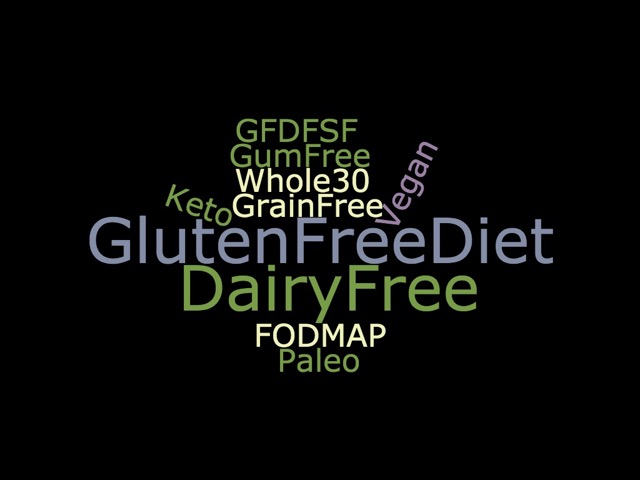
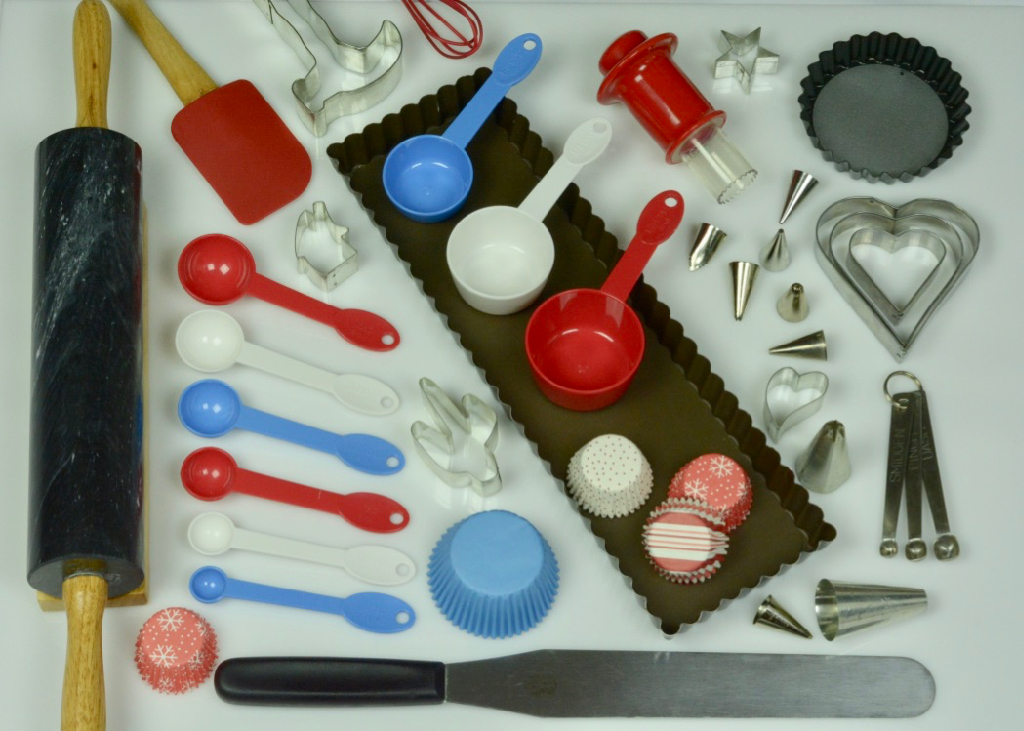


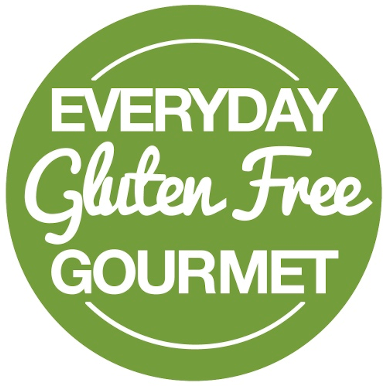
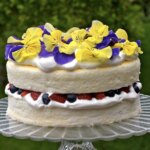


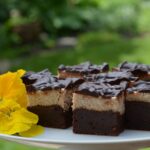








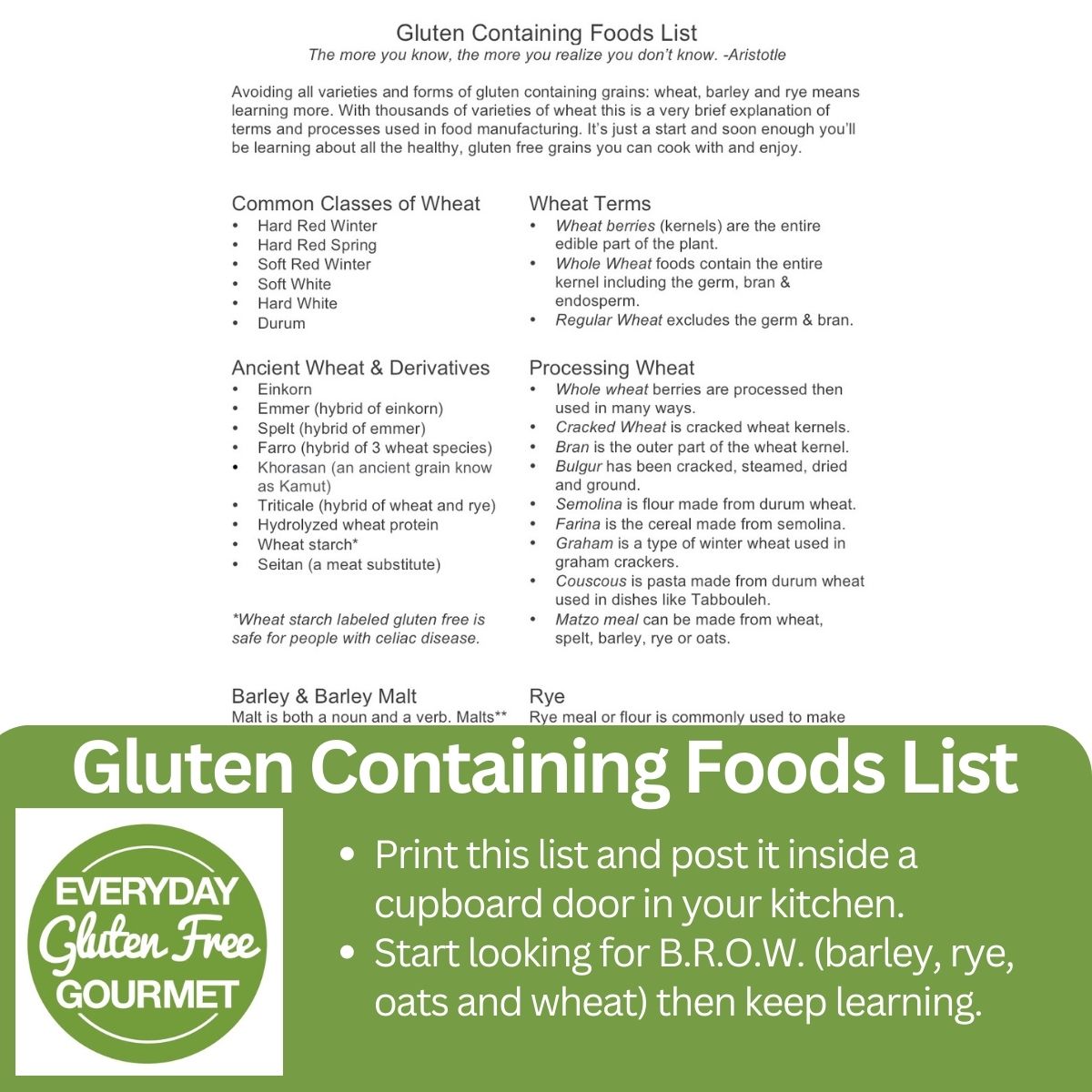

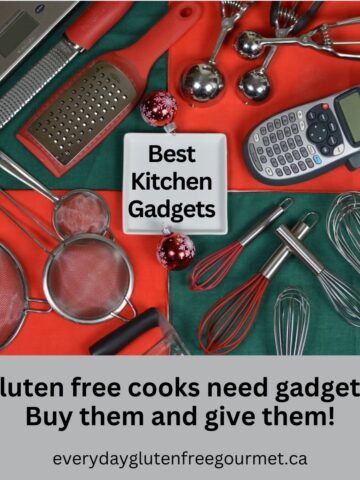


Leave a Reply